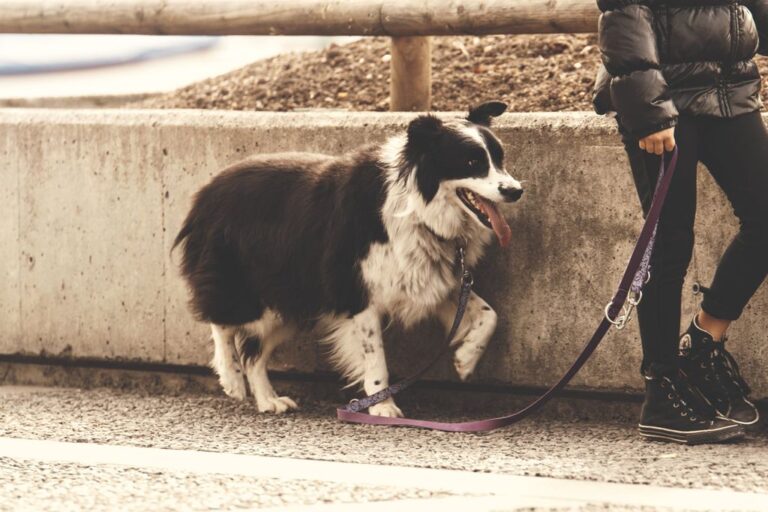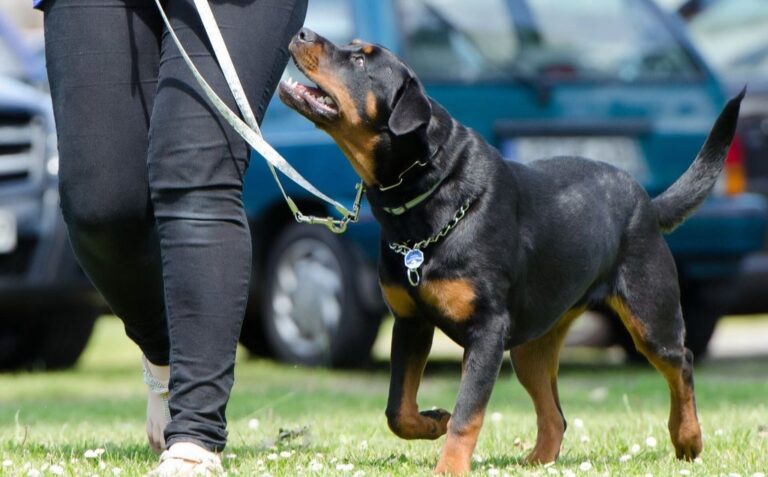Learn How to Teach Your Dog Basic Water Safety Skills
Water safety skills are crucial for dogs, as they can help prevent accidents and ensure a fun and enjoyable experience in the water. Teaching your dog basic water safety skills not only protects them from potential dangers but also allows them to confidently explore and engage in water activities. By following a few simple steps and using positive reinforcement techniques, you can help your dog become a confident and safe swimmer. In this article, we will discuss the importance of water safety skills for dogs and provide key takeaways to help you teach your dog these essential skills.
Key Takeaways
- Understanding the dangers of water for dogs
- The benefits of teaching your dog water safety
- Common water hazards for dogs
- Assessing your dog’s swimming ability
- Using positive reinforcement to encourage water exploration
Why Water Safety Skills are Important for Dogs

Understanding the Dangers of Water for Dogs
When it comes to water, dogs can be more vulnerable than they seem. It’s important to be aware of the potential dangers and take necessary precautions to keep your furry friend safe. Dogs may not have the same swimming abilities as humans, and they can easily become overwhelmed or tired in the water. Additionally, certain bodies of water may contain hazards such as strong currents, sharp objects, or toxic substances. As responsible dog owners, we need to understand these risks and ensure our dogs are protected.
The Benefits of Teaching Your Dog Water Safety
Teaching our dogs water safety skills has numerous benefits for both them and us. First, it helps to ensure their safety when they are near bodies of water. By teaching them how to navigate the water safely, we can prevent accidents and potential drowning incidents. Second, it allows us to enjoy water activities with our furry friends without constantly worrying about their well-being. We can relax and have fun knowing that our dogs have the necessary skills to stay safe in the water. Third, teaching our dogs water safety fosters a stronger bond between us. It creates opportunities for trust-building and shared experiences, strengthening our relationship. Lastly, having water safety skills can also provide mental stimulation for our dogs. Learning new commands and skills keeps their minds active and engaged, contributing to their overall well-being.
Common Water Hazards for Dogs
When it comes to water safety for dogs, there are a few common hazards that we need to be aware of. One of the main concerns is the risk of drowning. Dogs, just like humans, can tire easily in the water, especially if they are not strong swimmers. It’s important to keep a close eye on your dog and ensure they don’t venture too far from shore. Another hazard to watch out for is the presence of toxic algae. Some bodies of water can contain harmful algae blooms that can be toxic if ingested. It’s crucial to avoid letting your dog drink from or swim in water that may be contaminated. Lastly, sharp objects or debris in the water can pose a danger to your dog. Broken glass, fishing hooks, or sharp rocks can cause injuries if stepped on or swallowed. Always scan the area before allowing your dog to enter the water.
Preparing Your Dog for Water Activities

Assessing Your Dog’s Swimming Ability
Before introducing your dog to the water, it’s important to assess their swimming ability. Every dog is different, and some may be more comfortable in the water than others. Observing your dog’s behavior around water can give you an idea of their natural swimming instincts. If your dog shows interest in the water and seems confident, they may have a natural ability to swim. On the other hand, if your dog is hesitant or anxious around water, they may need more time and patience to learn. It’s important to take things slow and not force your dog into the water if they are not ready.
Introducing Your Dog to Water Gradually
When it comes to introducing your dog to water, it’s important to take it slow and make sure they feel comfortable. We want to create a positive experience for them, so they associate water with fun and enjoyment. Start by finding a convenient training on your schedule and choose a calm and shallow body of water, like a pool or a lake. This will help your dog feel more at ease and reduce any anxiety they may have. Remember, every dog is different, so be patient and go at their pace.
Choosing the Right Safety Gear for Your Dog
When it comes to water activities with our furry friends, safety should always be our top priority. Choosing the right safety gear for your dog is essential to ensure their well-being and enjoyment in the water. Here are a few key items to consider:
-
Life Jacket: Just like humans, some dogs may need a little extra help staying afloat. A well-fitted life jacket can provide the necessary buoyancy and support for your dog.
-
Waterproof Collar: A waterproof collar is a must-have for water-loving dogs. It ensures that your dog’s identification tags stay intact even when they get wet.
-
Protective Paw Wear: If you plan on taking your dog to the beach or on rocky terrains, consider investing in protective paw wear to shield their paws from hot sand, sharp rocks, or broken shells.
Remember, each dog is unique, so it’s important to choose safety gear that fits them properly and meets their specific needs. Consult with a professional or visit a reputable USA Dog Shop for expert advice and high-quality gear.
Teaching Your Dog Basic Water Safety Commands

Teaching Your Dog to Come When Called in Water
When it comes to teaching your dog to come when called in water, practice is key. Start by choosing a calm and familiar body of water, like a pool or a calm lake. Make sure to have some tasty treats on hand to reward your dog for coming to you. Begin by calling your dog’s name in a cheerful tone and using a distinct command, such as ‘come’ or ‘here’. If your dog starts swimming towards you, praise them enthusiastically and give them a treat. If they hesitate or seem unsure, try using a long leash to gently guide them towards you. Remember, patience and positive reinforcement are essential in this process.
Training Your Dog to Stay Close to You in the Water
When it comes to training our dogs to stay close to us in the water, patience is key. It’s important to remember that not all dogs are natural swimmers, and some may need more time and encouragement to feel comfortable in the water. One technique that has worked well for us is gradually introducing our dogs to the water, starting with shallow areas and slowly increasing the depth as they become more confident. Positive reinforcement is also crucial in this process, rewarding our dogs with treats and praise when they stay close to us. By using these methods, we can help our furry friends develop the necessary skills and confidence to enjoy water activities safely.
Teaching Your Dog to Exit the Water Safely
When it comes to teaching your dog how to exit the water safely, there are a few important steps to keep in mind. First, always make sure your dog knows where the exit point is. This can be as simple as pointing it out to them before they enter the water. Repetition is key here, so be sure to reinforce this information every time you go for a swim.
Next, it’s important to teach your dog how to climb out of the water. One effective way to do this is by using a designated exit ramp or stairs. These can be easily installed in your pool or attached to your boat. Practice with your dog by guiding them up and down the ramp or stairs until they feel comfortable doing it on their own.
Finally, reward your dog for successfully exiting the water. This can be done with treats, praise, or a favorite toy. By associating a positive experience with leaving the water, your dog will be more likely to repeat this behavior in the future.
Remember, teaching your dog to exit the water safely is an important part of their water safety training. By following these steps and being patient with your furry friend, you can help them become confident and skilled swimmers.
Building Your Dog’s Confidence in the Water

Using Positive Reinforcement to Encourage Water Exploration
When it comes to encouraging water exploration in our furry friends, positive reinforcement is key. By using rewards and praise, we can motivate our dogs to overcome any fears they may have and become more confident in the water. It’s important to remember that each dog is unique, so what works for one may not work for another. Patience is crucial as we guide our dogs through this process, allowing them to take their time and progress at their own pace.
Gradually Increasing the Difficulty of Water Activities
As we continue to build our dog’s confidence in the water, it’s important to gradually increase the difficulty of water activities. This allows our furry friends to develop their skills and become more comfortable in different water environments. One way to do this is by introducing obstacles or challenges during their water play. For example, we can place floating toys or treats at varying distances from the shore and encourage our dogs to swim out and retrieve them. This not only adds an element of fun to their water experience, but also helps them improve their swimming and problem-solving abilities.
Building Trust and Bonding Through Water Play
Building trust and bonding with your dog through water play is an essential part of their water safety training. It not only helps them become more comfortable in the water but also strengthens the bond between you and your furry friend. Playing together in the water allows you to build a sense of trust as you guide them through different water activities. By engaging in water play, you can teach your dog important skills such as swimming techniques and how to navigate obstacles. This creates a positive and enjoyable experience for both you and your dog.
Safety Tips for Water Activities with Your Dog

Supervising Your Dog at All Times
When it comes to water activities with our furry friends, safety is our top priority. We always make sure to keep a close eye on our dogs and supervise them at all times. This means being fully present and attentive, especially when they are in or near the water.
To ensure their well-being, we follow a few guidelines:
- We never leave our dogs unattended in the water, even if they are strong swimmers.
- We avoid distractions, such as using our phones or engaging in other activities, so we can focus solely on our dogs.
- We stay within a reasonable distance from our dogs, ready to assist them if needed.
Remember: accidents can happen in a split second, so it’s crucial to be vigilant and proactive in keeping our dogs safe. By supervising them closely, we can prevent potential dangers and provide immediate assistance if necessary.
Avoiding Strong Currents and Rough Waters
When it comes to water activities with our furry friends, it’s important to be aware of the potential dangers. Strong currents and rough waters can pose a serious risk to our dogs, so it’s crucial to take precautions. One of the key aspects of dog water training is teaching them to avoid these hazardous conditions. By gradually introducing your dog to different water environments and teaching them to recognize and steer clear of strong currents and rough waters, you can help ensure their safety. Here are a few tips to keep in mind:
Providing Fresh Water and Shade for Your Dog
When it comes to water activities with our furry friends, it’s important to remember that they can get dehydrated quickly. Dogs need fresh water to stay hydrated, especially when they are exerting themselves in the water. Make sure to bring along a water bottle and a portable bowl for your dog to drink from. Offering water breaks throughout the activity will help prevent dehydration and keep your dog healthy and happy.
In addition to water, providing shade is also crucial for your dog’s well-being. Too much sun exposure can lead to heatstroke and sunburn, which can be dangerous for dogs. Look for shaded areas near the water where your dog can take a break and cool down. If shade is limited, consider bringing a portable canopy or umbrella to create a shaded spot for your dog.
Remember, keeping your dog hydrated and protected from the sun is essential for a safe and enjoyable water experience.
In Conclusion
Teaching your dog basic water safety skills is essential for their well-being and enjoyment of water activities. By understanding the dangers of water, introducing your dog to water gradually, and teaching them important commands, you can ensure their safety in and around water. Building their confidence in the water through positive reinforcement and bonding experiences will further enhance their water skills. Remember to always supervise your dog, avoid strong currents, and provide them with fresh water and shade. With these tips, you and your furry friend can have a splashing good time in the water!
Frequently Asked Questions
Can all dogs swim?
While most dogs have the ability to swim, not all dogs are natural swimmers. Some breeds are more adept at swimming due to their physical characteristics, while others may struggle in the water. It’s important to assess your dog’s swimming ability and provide appropriate training and safety measures if needed.
How can I teach my dog to swim?
If your dog is not a natural swimmer or is hesitant about the water, it’s important to introduce them to water gradually and in a positive manner. Start by allowing them to wade in shallow water and gradually increase the depth as they become more comfortable. Use positive reinforcement techniques to encourage them and consider using a flotation device to provide added safety.
What safety gear do I need for my dog in the water?
When engaging in water activities with your dog, it’s important to have the right safety gear. This may include a life jacket or flotation device that fits your dog properly, especially if they are not a strong swimmer. Additionally, consider using a long leash or harness to ensure you have control over your dog in the water.
How can I teach my dog to come when called in the water?
Teaching your dog to come when called in the water is an important water safety command. Start by practicing in a controlled environment, such as a pool or calm body of water. Use positive reinforcement techniques and rewards to encourage your dog to swim towards you when called. Gradually increase the distance and distractions to reinforce the command.
What should I do if my dog gets tired while swimming?
If your dog gets tired while swimming, it’s important to provide them with a safe exit from the water. Encourage them to swim towards a designated exit point or guide them towards the shore if swimming in open water. Avoid forcing your dog to continue swimming if they are visibly exhausted and provide them with rest and water.
How can I keep my dog safe around water hazards?
To keep your dog safe around water hazards, it’s important to be aware of potential dangers and take necessary precautions. Avoid areas with strong currents or rough waters that can be dangerous for your dog. Keep an eye out for hazards such as submerged objects, toxic algae, or steep drop-offs. Always supervise your dog and provide them with fresh water and shade to prevent dehydration.







6 Comments